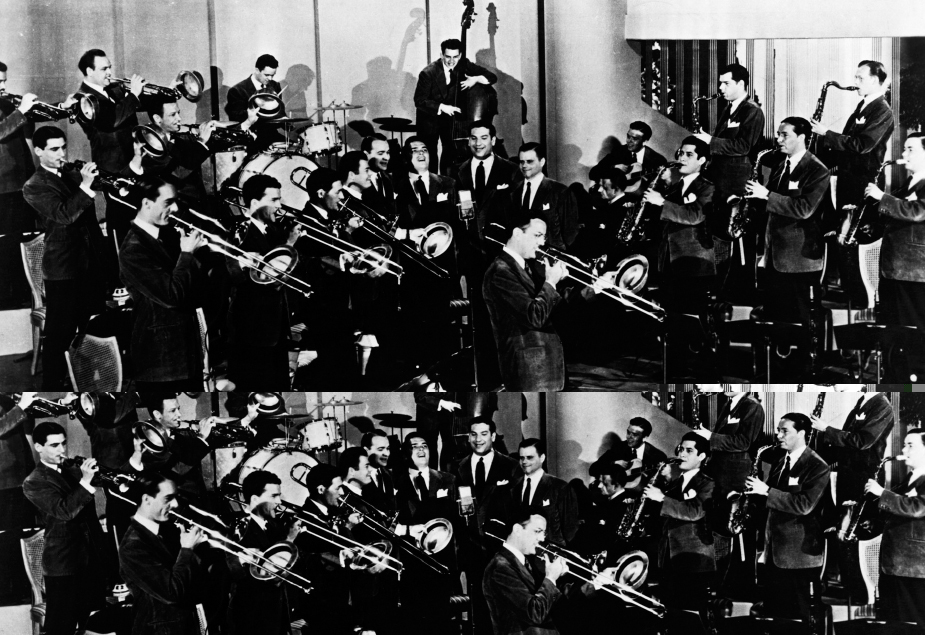Big-Band Jazz: Swing
Around 1930, jazz gained significantly in popularity, thanks in part to Armstrong’s recordings. With popularity came changes, not all of them for the good. Jazz now had to reach bigger audiences in ballrooms and roadhouses. This meant big bands, with ten to twenty-five players — and such large numbers required carefully written-out arrangements of the songs played. Improvisation, which was the essence of jazz, was necessarily limited under these conditions.
However, big-band jazz — called swing — compensated for some of its lost spontaneity by variety of tone color and instrumental effects. A novel style of band orchestration was developed, based on the contrast between brass (trumpets and trombones) and “reed” (mainly saxophone) groups. Soloists cut in and out of the full-band sounds. Jazz “arrangers,” who arranged current songs for the bands, treated this style with the greatest technical ingenuity and verve; they deserve the name of composers. Sometimes they contrived to allow for some improvisation within their arrangements.
With popularity, too, came white musicians and managers, who moved in on what had previously been a relatively small black operation. Not only were black jazz musicians marginalized in the mass market, but their art was watered down to suit the growing audience. The big swing bands that were commercial successes were white, and their leaders — Benny Goodman, Glenn Miller, Artie Shaw — were household names in the 1930s and 1940s. But the best of the big bands were black: those led by Count Basie (1904–1984), Jimmie Lunceford (1902–1947), Chick Webb (1909–1939), and Duke Ellington.

Swing in the late 1930s: one of the most famous of the “big bands” (Glenn Miller’s) — brass to the left, reeds to the right. © Underwood & Underwood/Corbis.
